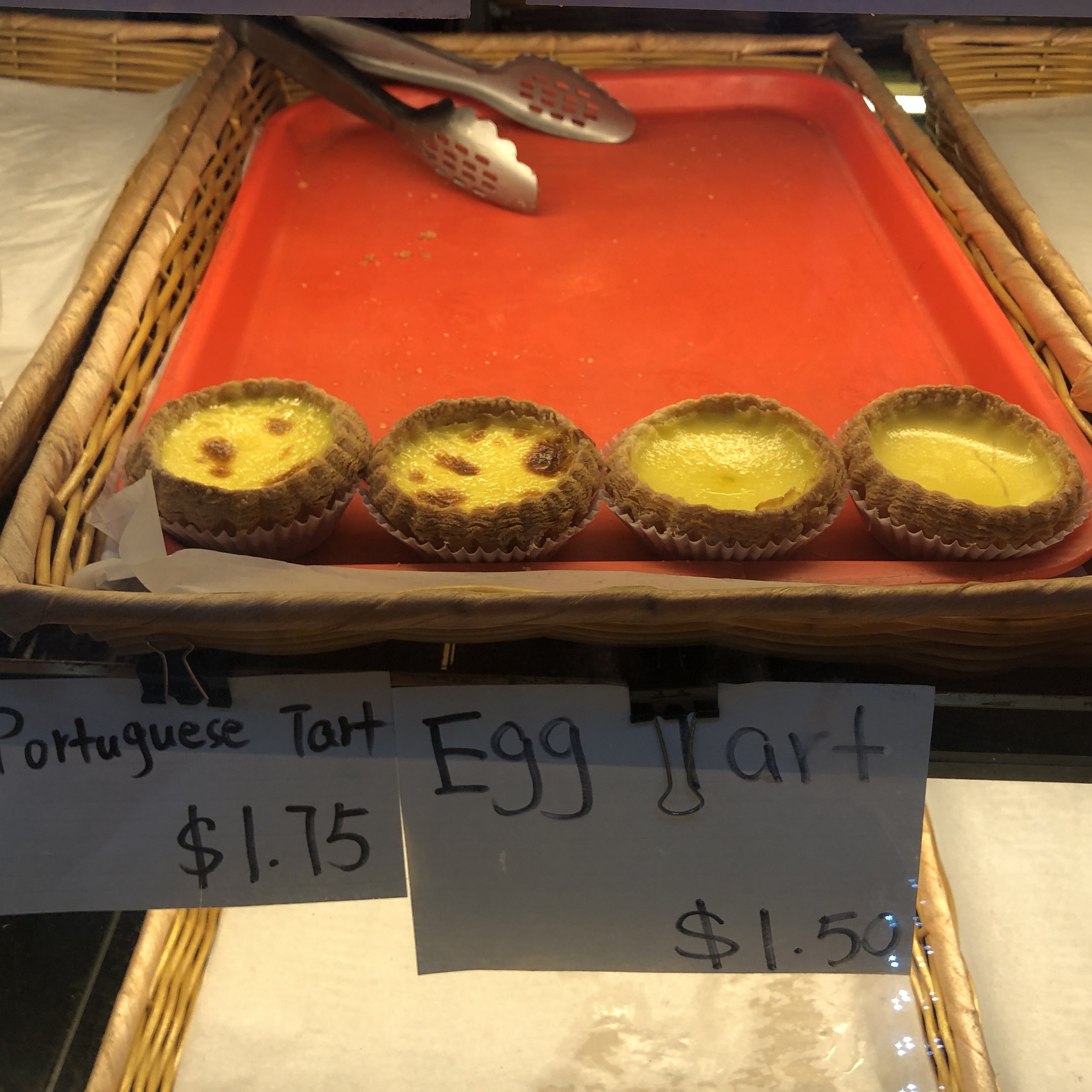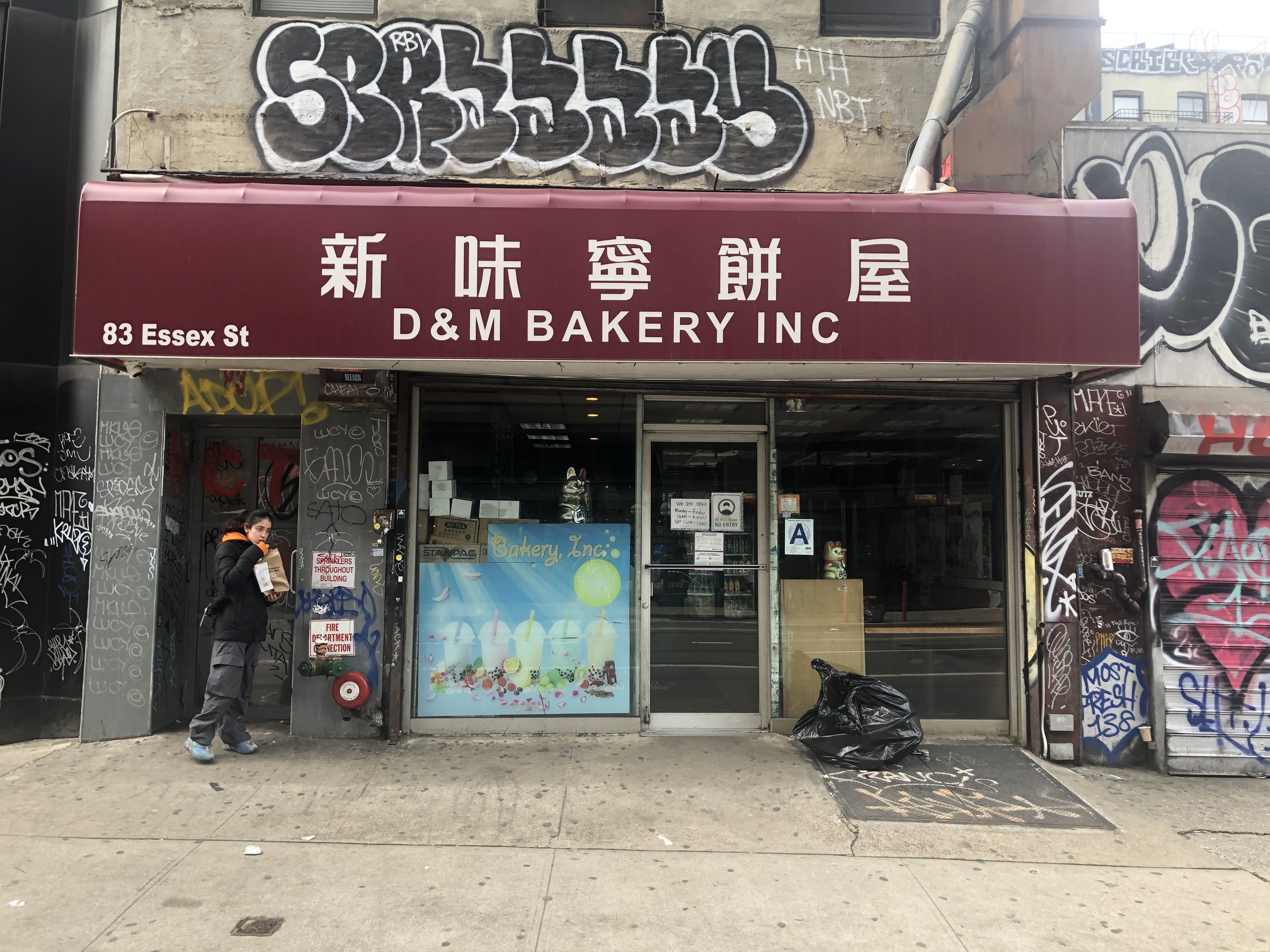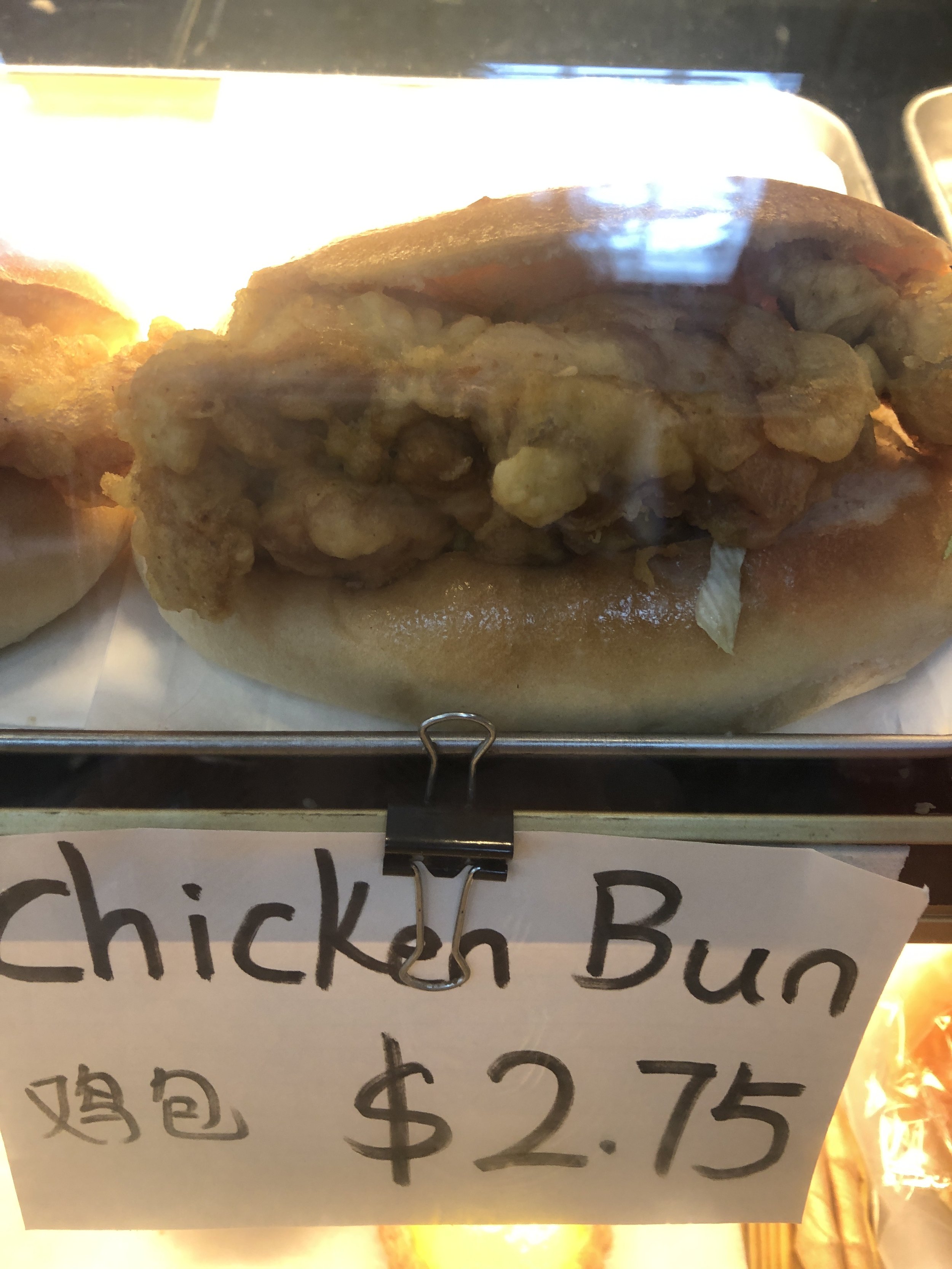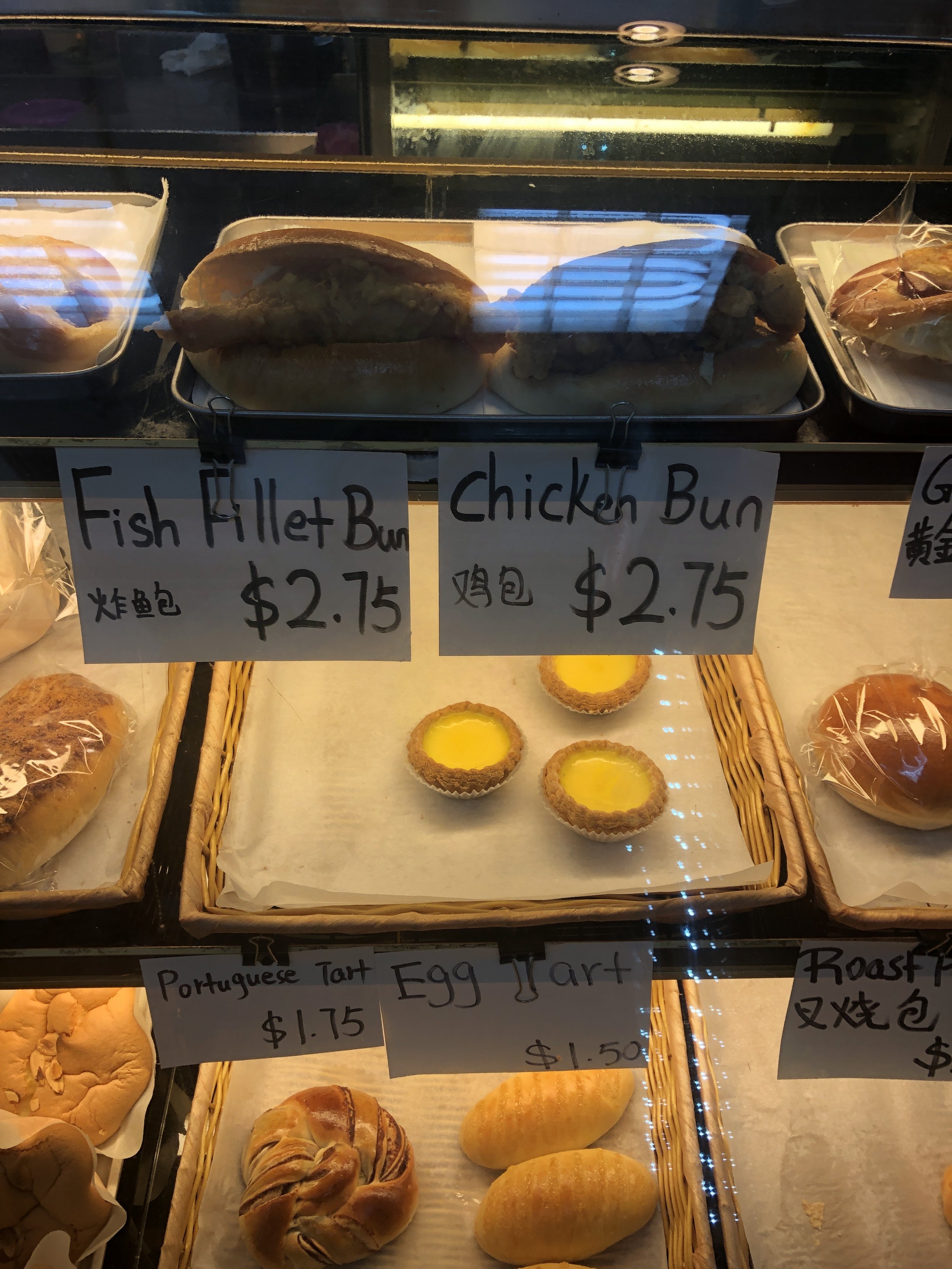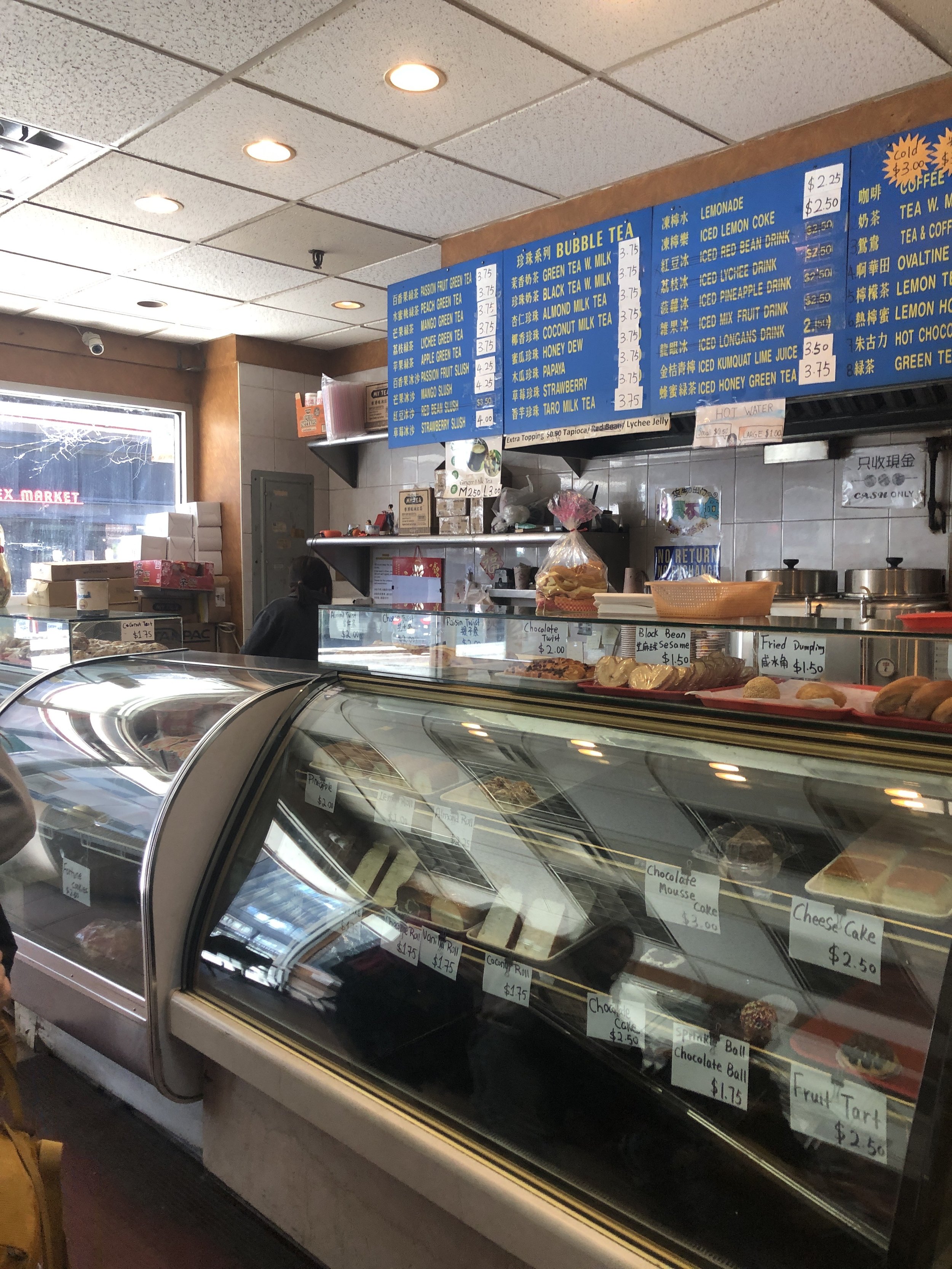Portuguese Tarts at Last Chinese Bakery on the L.E.S.
At first glance everything about D&M Bakery is discouraging to the customer. It sits on a bleak stretch of Essex Street, under a burgundy sign with five Chinese characters and the words D&M Bakery. It’s almost 2PM, and there are no other customers, and no one is seated at tables that have a look of “what the hell?” The woman at the counter usually has her back to me and is scrolling through her phone. The lighting is such that baked goods on red trays either look lurid or are hidden in shadow. Still, what lures me are the pasteis de nata, yellow Portuguese custard tarts in puff pastry, the tops well blistered ($1.75). One bite, and I am enraptured. The rich custard is scorched on top and has just the right amount of sweetness. The puff pastry crust—no frozen pastry, this—is crisp, buttery and layered; it literally melts in your mouth.
How did this Portuguese pastry find its way to a Chinese bakery? When I decided to profile the custard tarts, I did some research, and the wonderful Woks of Life recipe explained their provenance. These tasty morsels migrated to New York City’s Chinese bakeries via Macau, a special administrative region of China situated across the Pearl River from Hong Kong. Macau was a Portuguese colony until 1999 when it was transferred back to China. I love the way a classic* Portuguese pastry on a Chinese peninsula found its way to New York City. I’m reminded of my students at Henry Street Settlement where I go every Thursday (hence the stop at D&M) to teach English. They are immigrants from Venezuela, Hong Kong, and Peru, from Brazil via Angola. They get excited when I name foods from their countries. The immigrant’s desire to have a taste of home is why New York City tops the list of the city with the most diverse dining scene worldwide!
Can the early bird catch a tart? Or a fried chicken sandwich?
Because I emerge from the Delancey Street subway stop anywhere from 1:30 to 1:50 there are usually nada pasteis de Nata on the red tray. The bakery seems stingy with the tarts or devoid of any profit motive. Meanwhile there are always many Chinese egg tarts, but even the reticent woman at the counter shakes her head and says, “Not as good.” Portuguese tarts have cream, she says, the egg tarts, milk, and, I’d add, they don’t have caramelized tops.
I wanted to know what, if anything, people said about D&M on Yelp. There were only nine reviews, almost all of which lauded “the last Chinese bakery on the Lower East Side”! No one mentioned the tarts I covet, but there was an intriguing mention of the $2.50 chicken sandwich. A little more Googling and I discovered that Eater’s senior food critic, Robert Sietsema listed D&M’s chicken sandwich as the “No.1 pandemic sandwich” in 2021 saying, “Among all the hailstorm of fried chicken sandwiches pelting the dining public today, this is one of the best.” I decided that not only must I taste this fried chicken sandwich, but I also must get to D&M earlier so I can nab a Portuguese tart.
Last Thursday I got out of Delancey Street at noon. When I entered the little bakery, I felt like I entered the portal to an alternative universe. The Last Chinese Bakery on the L.E.S. seemed brighter inside; it was full of customers, ordering cakes and buns and Hong Kong coffee/tea or Yuanyang (the Woks of Life explain here). At one table there were two elderly women having an animated discussion in Spanish while local middle schoolers whisked in for a snack or a bubble tea. As I waited for the busy counter woman to take my order, I heard a couple ask if she has any children. She was wearing a mask, as always, but her eyes were smiling as she told them “Three!” When she got my “Chicken Bun” ($2.50!) from a refrigerator, she said she would put it in the microwave for 30 seconds. 😱 I asked her to heat it for just 15, which was perfect. And so was the Chicken Bun, just like Sietsema said: Generous chunks of juicy chicken thigh meat wrapped up in a light puffy batter, mayonnaise (which makes everything better), pickle slices and even a piece of lettuce. Some folks may not fancy the sweetish bun, glistening as if lacquered on the outside, but I liked the contrast of sweet with savory.
As I ate contentedly perched on a stool at the window counter, I listened to an extremely foul-mouthed soap opera playing loudly on the radio. Characters with British accents said things like, “I’m not royalty, but I AM royal adjacent. He’s such a fucking peasant!” This was certainly not “The Archers!”, the world’s longest running soap opera, but it added a dash of spice to the D&M universe. Wiping the grease off my chin and fingers—I think a fried chicken sandwich should be slightly greasy—I started to look forward to the Portuguese tart. Alas, I was still too late! I settled for second best, an egg tart, because the ruffled crust is the same flaky buttery wonder.
Later that day at the end of my English class I showed my student Linda a photo of D&M Bakery that I’d taken before entering. I enlarged the image on my phone so she could see the Chinese characters. “What do they mean?” I asked her. Linda is from Hong Kong; she screwed up her face to think for a bit. “Little… Taste… Bakery… House,” she ventured, but seemed unsatisfied with her translation. She pointed to the third character, crossed her hands over her chest and rubbed her arms with a dreamy smile on her face. “Love?” I asked. She nodded yes.
*Pasteis de nata originated in a monastery west of Lisbon 300 years ago. You can read about their history here.
D&M Bakery
83 Essex Street (near Delancey)
Open 6AM - 4PM every day, closed Sunday
